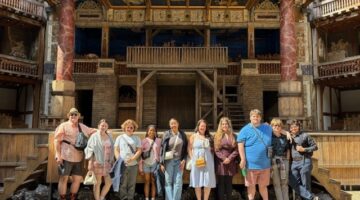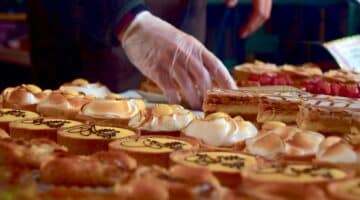Château Frontenac – Destination Spotlight

From the Eiffel Tower in France to the Great Wall in China and Big Ben in England, every country has their iconic architectural masterpiece. In Canada, the sight to see is the Château Frontenac. A grand hotel with over 120 years of history, the Château Frontenac towers over Québec City. Standing at an elevation of 177 ft. (54 m), the hotel overlooks the St. Lawrence River. It is one of the most photographed hotels in the world.
The Château is not only a main attraction due to its aesthetics and significance but its history as well. It sits on the site of Château Haldimand, the former seat of government for the British Governors of Québec and Lower Canada. The name comes from Louis de Buade, the Count of Frontenac, who was governor of the colony of New France from 1672-1682 and 1689-1698. During his time as governor, Buade managed operations of the colony to as far as Louisiana and the Great Lakes. He famously defended Canada against British and Iroquois attacks.
The original building ended up burning to the ground in 1834 and was not rebuilt for 60 years. The Château was to be reconstructed and at that time the Canadian Pacific Railway (CPR) company was looking to encourage luxury tourism to increase their wealthy passengers. Oversaw by the CPR, the Château Frontenac was designed by American architect Bruce Price, as one of a series of “château” style hotels.
The Château Frontenac opened in 1893, was supposed to be in time for the 1893 Chicago World’s Fair to accommodate tourists but just missed the deadline. With over 600 rooms and 18 floors, the hotel is a Canadian crown jewel inside and out. Its history is celebrated with Louis de Buade’s coat of arms prominently displayed throughout the hotel including on the outside wall of the entry arch. There is also a 300-year-old stone bearing the Cross of Malta emblem that sits in the lobby.
Some of the more notable events held at the Château were the World War II Allies’ Conferences of 1943 and 1944, in which Winston Churchill and Franklin D. Roosevelt among others discussed war strategy. Alfred Hitchcock filmed one of his classics, I Confess, at the hotel in 1953. Through the years, some of the more famous names to stay at the Château include King George VI and Queen Elizabeth, Charles de Gaulle and Ronald Reagan.
If one does choose to stay at the hotel, they may experience a bit of the history in an unlikely way. It is said that the Château Frontenac is haunted…allegedly. The Château’s namesake, Louis de Buade, died on the site while his fiancée was overseas. He left instructions that upon his death, his heart was to be sent in a box to his fiancée in Europe. Upon receiving this memento, she was too grief-stricken to accept it and had the box returned to Québec. Now, it is believed that the ghost of the fiancée with the face of Buade haunts the halls looking for his love lost.
Haunted halls or not, the Château Frontenac is still a must-visit for anyone traveling to Québec’s capital. There is so much to learn about upon visiting, whether you are booking your stay or just passing by for a quick picture. The Château was made a National Historic Site of Canada in 1980 and on June 14, 1993 the Canada Post issued a stamp featuring the Château Frontenac. In 2012, it became a charter member of Historic Hotels Worldwide. It is etched in Canadian history and has become one of the more famous hotels in the world.
If you do find yourself in Québec City with time to visit this Canadian landmark, be sure to hit the toboggan slide right next door. Just steps from the hotel, the traditional toboggan run is one of the oldest attractions in the city. The three icy runs are usually open from mid-December through mid-March. Hang on tight as you will be zooming down the hill at speeds over 40 mph! This is just one of many reasons why the Château Frontenac has become such a can’t miss destination for travelers.
Interested in seeing the Chateau in person? Browse through all of our tours to Canada!









